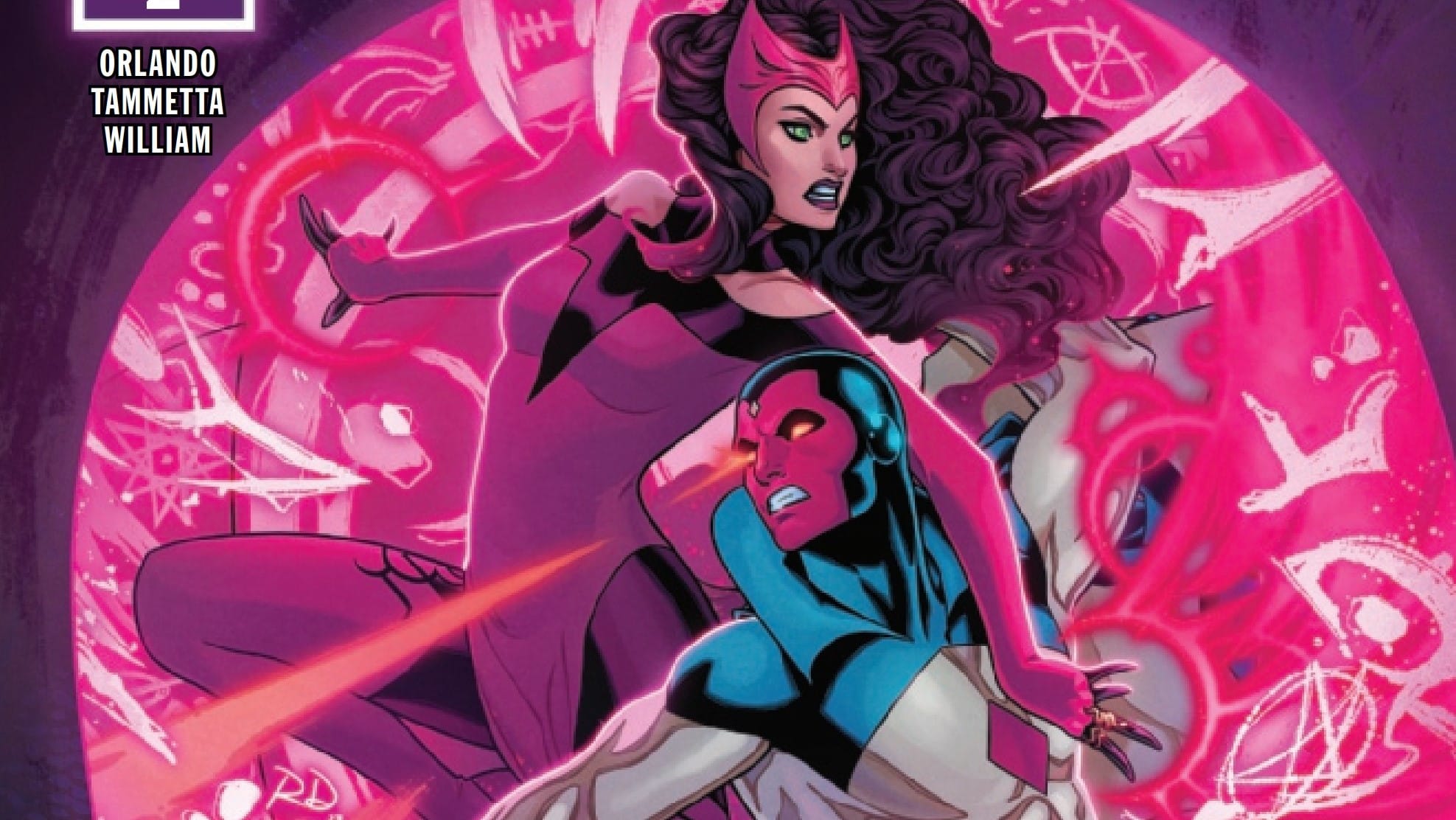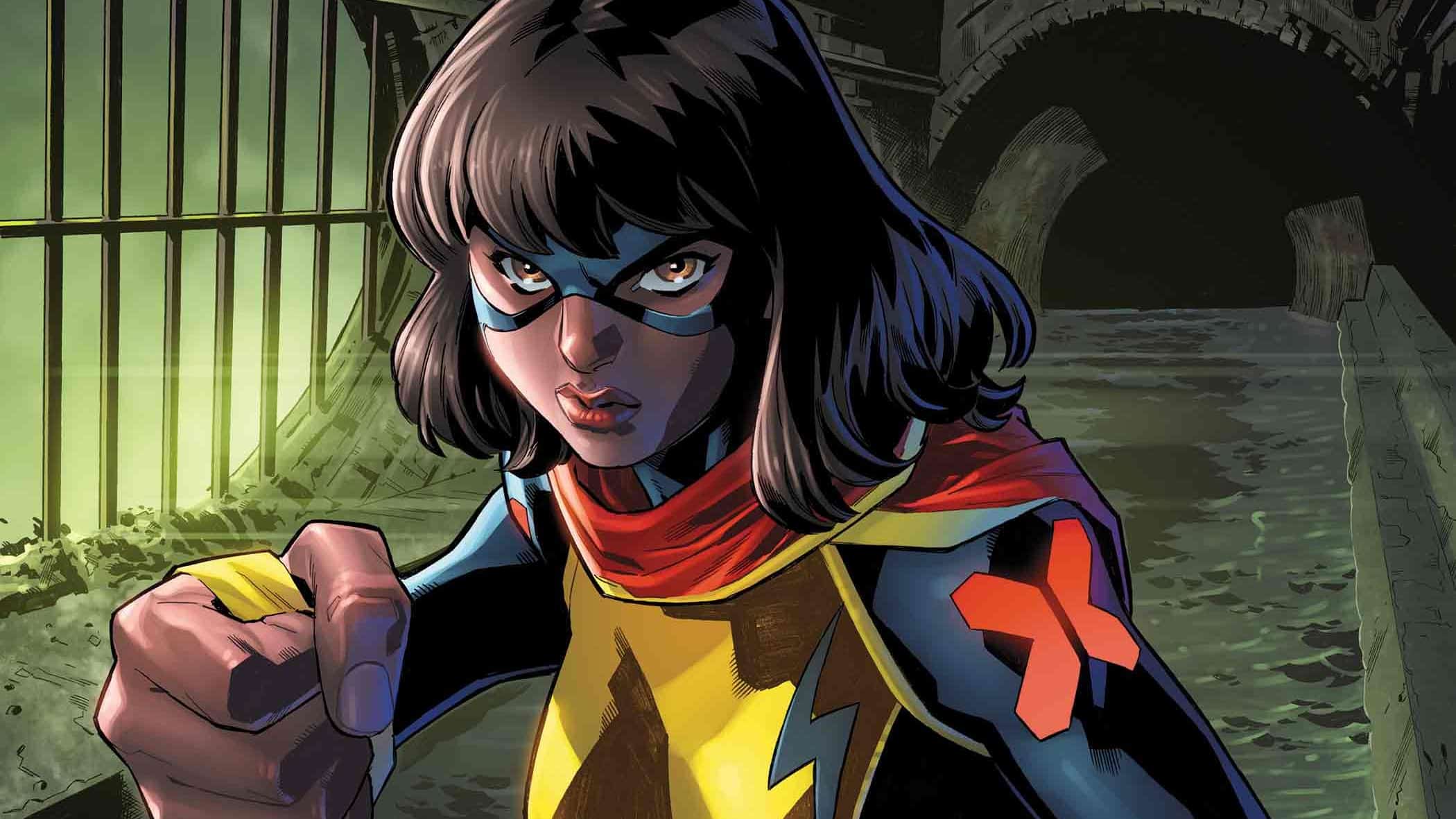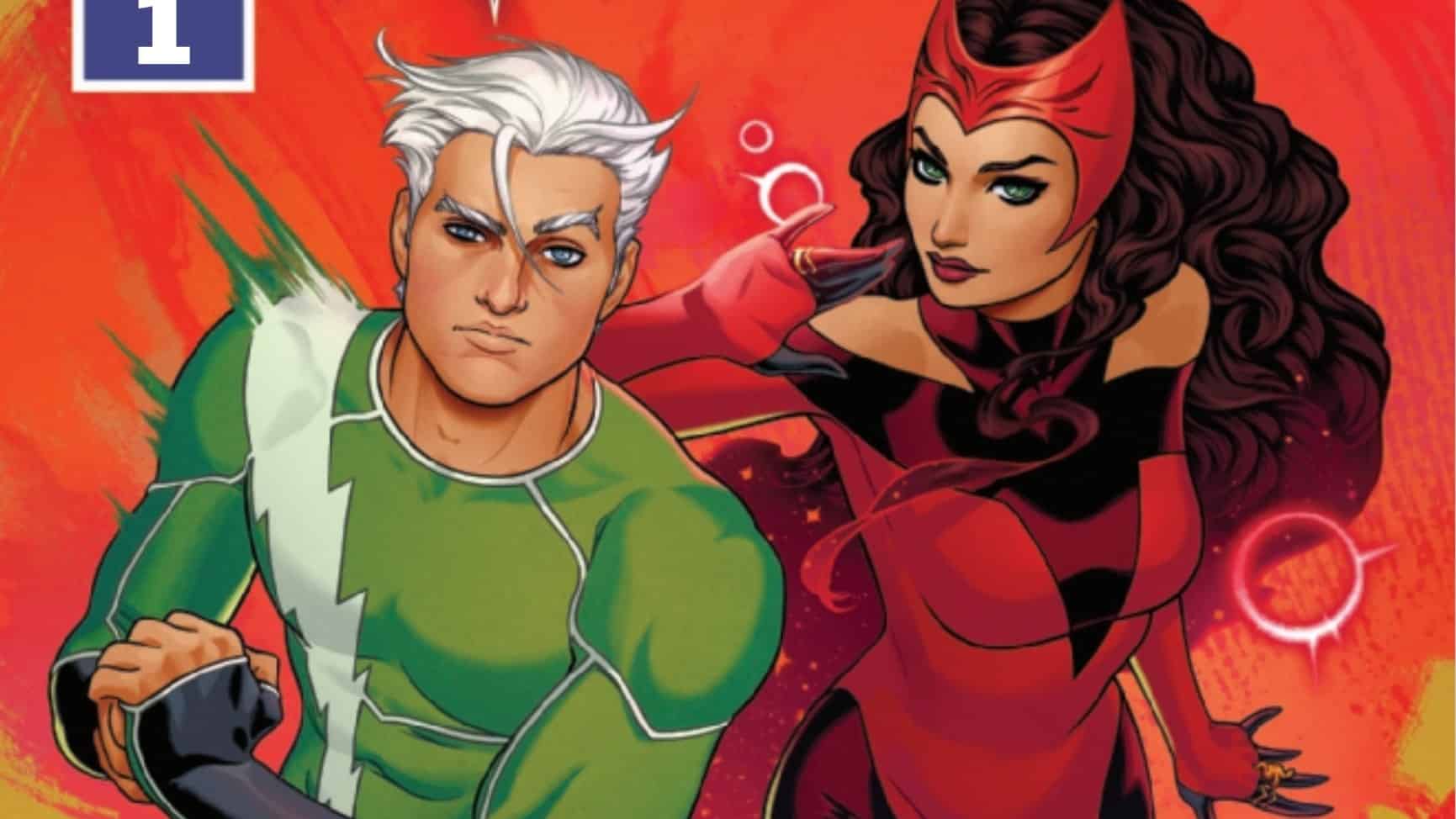Hello friends and readers! Another packed week as the year ends! Zoe Tunnell flexes her eidetic memory with Taskmaster #2, Jude Jones continues his coverage of all-things Cap with Captain America #26, WMQ head honcho Dan Grote gives us the scoop on Deadpool #9, Matt Lazorwitz hits us with the teen troubles of Magnificent Ms. Marvel #17, and finally Rob Secundus takes us on a fever dream into Fantastic Four #27! Enjoy!
Taskmaster #2
Written by: Jed MacKay
Pencils and Inks by: Alessandro Vitti
Colors by: Guru-eFX
Letters by: Joe Sabino
Finally! The clash of the titans everyone has been waiting for! The godlike murderous cyborg Supermanalogue Hyperion up against *checks notes*…Taskmaster. Hoo boy. Well, while Taskmaster’s arms might be a little too short to box with this particular god, Taskmaster #2 proves that it doesn’t matter when you can shank him in the kidney.
Picking up where the outstanding debut issue left off, Taskmaster #2 has our “hero” trying to clear his name in the murder of Maria Hill, and all he needs is the body language of the world’s greatest spymasters to do it. First on the list is the current head of the Squadron Supreme of America, and agent of Mephisto, Phil Coulson. MacKay’s skill at weaving genuinely funny gags into his dialogue is put to good use throughout the issue, although Coulson’s trip to the comic shop erred a bit too far on the twee side of things for my tastes. The biggest shock is how suddenly the tone shifts once Coulson calls for help and Hyperion arrives on the scene.
Taskmaster can’t beat Hyperion. I know it. You know it. And, thankfully, Tasky knows it too. The bulk of the issue is spent following the fight between the two, and it is surprisingly raw and violent in a way that genuinely caught me off-guard. From the very second the battle kicks off, Taskmaster is ready to die. Every ounce of courage and stubborn pride he has is put to use, even just running at Hyperion, and that’s before his ribs are shattered in a single punch. Vitti’s art takes on a messy, more shadow-drenched tone as the fight wears on, aided by the horrifying splattering of blood that covers Master’s costume by the end of it.
As this is #2 in a 5 issue miniseries, it shouldn’t come as a surprise that Taskmaster manages to eke out a ghost of a win against the juggernaut superhuman and live to fight another day. What IS a surprise is that immediately follows that victory? Fueled by bloodlust, pain, and wounded pride, Taskmaster goes feral in a way I’m not sure I’ve ever seen before. Barely coherent thoughts, slurred speech through the wreckage that was his jaw, and a knife at Hyperion’s throat exude a horrifying menace that cracks through the bravado-laden facade. It’s a stark contrast to not only the rest of the series but Taskmaster’s usual composure in a way that has truly stuck with me.
Taskmaster #2 is a strange issue! Taking the absolutely hilarious and manic energy issue #1 sported and turning it into an entirely different affair. It’s not bad, by any means; in fact, it was one of my favorite books of the week. But it is an unexpected development in a series that seemed to lay its cards on the table from the start. There’s more going on in Taskmaster than I think anyone is expecting, and that is very exciting.
Captain America #26
Written by: Ta-Nehesi Coates
Art by: Leonard Kirk
Colors by: Matt Milla
Letters by: Joe Caramagna
Captain America #26 again finds Coates narrating thoughts that don’t always line up with the action happening on the page. The issue (which feels like it happened in all of 3 minutes of real time) shows common struggle forging yet another member of Cap’s ragtag family or revolutionaries. Maybe I’m desensitized; maybe I’m used to it; or maybe, in this case, the narrative structure works. The juxtaposition of thought and action, the flashes between the past betrayals and service in the present: for some reason these beats click here more than they have in the past. The art may look no fresher (though I do appreciate how memories are lighter), yet its impact feels stronger. Maybe I’m getting soft in my old age.
Or maybe I just like seeing a Hulk with a mustache.
That said, the kicker of the issue – the transformation of Thunderbolt Ross to the Red Hulk – serves as the cover of the issue. The issue would be stronger if that revelation wasn’t telegraphed so prominently. Like watching a movie trailer (remember movies? In theaters?) that shows all the best parts, the cover diminishes the comic, ruining a climax the issue was clearly trying its best to slowly build upon.
In any case, Cap continues to come through in the clutch. His weapons aren’t necessarily super strength or flying, so much as the ability to turn hard times into goodwill and trust with good people (albeit people who have super strength and can fly.) Will it be enough to stop Red Skull and his acolytes? Maybe! Probably! Who knows?
I guess I’ll have to check out next month’s cover to find out.
Deadpool #9
Written by: Kelly Thompson
Pencils by: Gerardo Sandoval
Inks by: Victor Nava
Colors by: Chris Sotomayor
Letters by: Joe Sabino
This issue wraps up a three-part story in which Deadpool and his current partner who begrudgingly puts up with him but soon learns to appreciate him, Elsa Bloodstone, fight a monster called the Bone Beast Queen that has infected Elsa’s Bloodstone. To save Elsa, Wade takes the corrupted Bloodstone, thus subjecting himself to possible absorption by the queen. Sex jokes ensue until Wade blows himself up real good to prevent being possessed. Elsa kisses Wade’s skull (gross), and they walk off to their next adventure.
Also, Jeff the Landshark walks around with a knife in his mouth, and it’s adorable.
But … sigh. This arc has felt like a generic Deadpool story — Wade gets mixed up with a woman he ends up crushing on (See also Siryn, Copycat, Typhoid Mary) and ends up going on a quest to save her because he’s desperate to be the hero, and ends up getting put through the ringer, but it’s OK, because healing factor. Make PG sex jokes and repeat until dry.
At nine issues, it feels too soon for this book to be running out of steam. Deadpool is king of an island of monsters. That’s new and interesting. Why aren’t we exploring that some more? That’s the stuff that makes this current iteration stand out from that which came before. That was the stuff that made me think, “Hey, maybe I’ll read Deadpool again” after getting tuckered out by the back half of the Gerry Duggan run.
Gerardo Sandoval’s heavily inked, manga-lite style is a step down from Chris Bachalo’s timeless heightened weird from the first few issues. He draws the Bloodstone-poisoned Deadpool as covered in glowing red cracks that make him hard to look at, like staring up close at a red neon beer sign that’s on the fritz. And his “bone beasts” are A) Not made of bone despite that being their name, and B) look like a riff on the black Isz from Sam Kieth’s The Maxx, if the Isz merged with Mark Knull’s symbiotes. This isn’t even a King in Black tie-in, why I gotta deal with them goo bois?
(Looks at the next-issue page, sees it’s a King in Black tie-in, cries real tears.)
I do like what Joe Sabino does with literalized sound effects, including “Double slice,” “Slightly ineffectual kick” and “Double stab.” It’s Batman ‘66 by way of Marvel vs. Capcom.
My biggest beef with this issue, however, is the fact that the book has a recap page, yet the story proper opens with Deadpool providing a recap. Yes, it’s how we learn the Bone Beast Queen has begun taking possession of Deadpool, but maybe there’s a way to do that that isn’t repetitive.
Magnificent Ms. Marvel #17
Written by: Saladin Ahmed
Art by: Minkyu Jung
Colors by: Ian Herring
Letters by: Joe Caramagna
The penultimate issue of Magnificent Ms. Marvel is a very solid superhero comic. Readers get the payoff to a bunch of the threads that have been seeded since the book returned from its COVID induced hiatus, our hero gets some big damn hero moments, and the end sets up a big confrontation for the final issue next month. Then why do I feel a little flat after reading it? Because it feels like there should be more.
This issue starts in media res, with Ms. Marvel being pursued by Dum-Dum Dugan, the legendary former S.H.I.E.L.D. agent now hunting her for the anti-teen hero organization C.R.A.D.L.E., along with his team, and Dugan and Kamala wind up teaming up to deal with Monopoly, a corporate/gentrification based villain who Ms. Marvel has fought before, and who has co-opted/possessed another of her foes, Discord, one of her former school friends. They defeat Discord, sever him from Monopoly’s hivemind, and he agrees to surrender to Dugan, having seen Kamala for the hero she is. Dum-Dum also sees it, and decides that C.R.A.D.L.E. can go stuff it.
It’s all very solid, but very pat. It feels like Saladin Ahmed had a lot more planned for this book, had set-up a lot more in his first couple issues, and now has to tie it all up quickly. Agent Man-Bun, this nameless but overly gung-ho fascist C.R.A.D.L.E. agent who had a big part in the first appearance of the organization in this book, seemed to be set up as the foil for Dugan’s more measured approach, but he faded immediately after that issue, and in this one is lifted by Ms. Marvel and deposited on a roof, conveniently removing him from the action. The issue’s sudden start and quick finish feels rushed. The final page set up of a fight with Stormranger, Ms. Marvel’s old Kree battle suit turned sentient foe, also seems out of nowhere, even with the knowledge that there was supposed to be a whole Empyre tie-in with the character that was cancelled.
I feel like I’m being very negative here, and I don’t want to be. If you’ve never read a Ms. Marvel story before, this actually is a great issue to get a feel for who she is, both as a character on her own and as a hero. But I want there to be more to this story than a rushed ending, and while I know Ms. Marvel will continue to appear in Champions, I can’t imagine one issue is going to be enough to pay off all the emotional beats Ahmed has been building during his run.
Fantastic Four #27
Written by: Dan Slott
Art by: R.B. Silva, Juanan Ramírez, and Zé Carlos
Colors by: Chris O’Halloran
Letters by: Joe Caramagna
I read the newest issue of Fantastic Four in the best way for this series: a dark, confusing, hallucination-inducing, exhaustion-driven fog. I read, and I slept, and I woke, the cycle repeated, and I eventually did not know the difference between the two cycles; things blurred, the room shook, figures emerged from the walls, and I did not know if I was in a nightmare or in hell.
There were three: the first I knew, in the way you always know things in dream, was a figure from my past. He was one who had introduced me, though he never knew me, to the 616 years ago. He was a jolly figure, and as he laughter reverberated through my skull I saw She-Hulk, and Awesome Andy, and the Thing. And then: Spider-Man! So much Spider-Man. A reinvention, a fleshing out of his life, huge cosmic events, personal stories, and then above all else a story that I loved much later than those first figures, a story about an evil man, a man who thought he was superior, finding some measure of grace in the performance of heroism. But something happened to this jolly figure– I could see grotesque figures at his feet, clawing at him– two CEOS– one in armor, the other– it couldn’t be– the other was Spider-Man again, now Spider-Musk, and it was his webbing that eventually caught the figure and dragged him back into the shadows. Just before he was totally submerged in darkness, one last laugh rang out, and I caught a final glimpse of him, in images of alien fleets, invading plants, a celestial messiah.
The second figure stepped forward, and at first he frightened me– I knew that I could not speak his Forbidden Name or else he might appear, out of nowhere, and start lecturing me about the nature of stories. The first figure had made me nostalgic but, beyond that initial fright, I mostly grew sad. He was continuing stories from the first, but there was something weary about them. “The Child,” he whispered, “was never a member of a minority at all. He was faking it, even to himself, because he wanted to be special. He doesn’t know yet that the most special thing of all is the Nuclear Family, and finding one’s place in it. And his sister– she’s so angry because she found out her crush was polyamorous. So angry she, a petulant teenager, wanted him dead for this. But don’t be upset– trust the story– the story continues– such is the nature of things– and now– NOW– he gets– an Iron Man suit.” “I’m sorry, what?” I asked, and he continued: “They have a stargate now, his family. They travel in space a lot, but now they have a gate. Easier. The new home though, that’s gone. The Future Foundation is gone. Reed Richards’ guilt for the accident is gone. So many things are gone. But there are new things too– like The Thing? He also is learning the importance of the Nuclear Family. And Johnny? He’s going to learn that he needs to grow up and settle down, again. The classic Johnny story: the hothead needs to settle down. But this time he’s settling down with a winged lady. New… new… new…queue….lar.. Family…” and as he trailed off a voice shrieked from the shadows, “WHERE IS MY SCRIPT?!” and the second figure instantly vanished.
The third figure was older; he was from the future, or I should say futures, as he blurred into variations of himself. In his ever shifting lines I saw one man who reminded me of that first figure that emerged, a man who was overjoyed and spread that joy. He made new things; things with superheroes, things with colorful characters, larger than life figures, even new things with a mad man in a box. He could only make new things, of course, the way any of us do: by discovering new things, listening to perspectives new to him, seeking, enjoying, exploring, learning. But vibrating at cross-purposes was a man more like the second figure, but sadder, more tired, and far, far angrier. He was barely making things any more; deadlines were entirely shot; whereas the joyful possibility I had just seen lived in the unknown, this possibility lived on forums, facebook, twitter, reveled in every algorithm designed to hurt its users, because this is profitable. He sought out, as so many do, whatever would make him angry, and he fed the algorithm, and he sought out others to insult, debate, deprecate, and as he devoted more and more of his life to this, that life drifted further and further from the making of joyful things.
And just as before, I saw a creation. There was The Griever, there, the embodiment of entropy, decay, and the death of all things. She watched the possibilities, and I know she was hoping for the latter future to come about, for such a life helps ideas like her above all else.
Suddenly, they were all gone. I was awake, at my computer.










